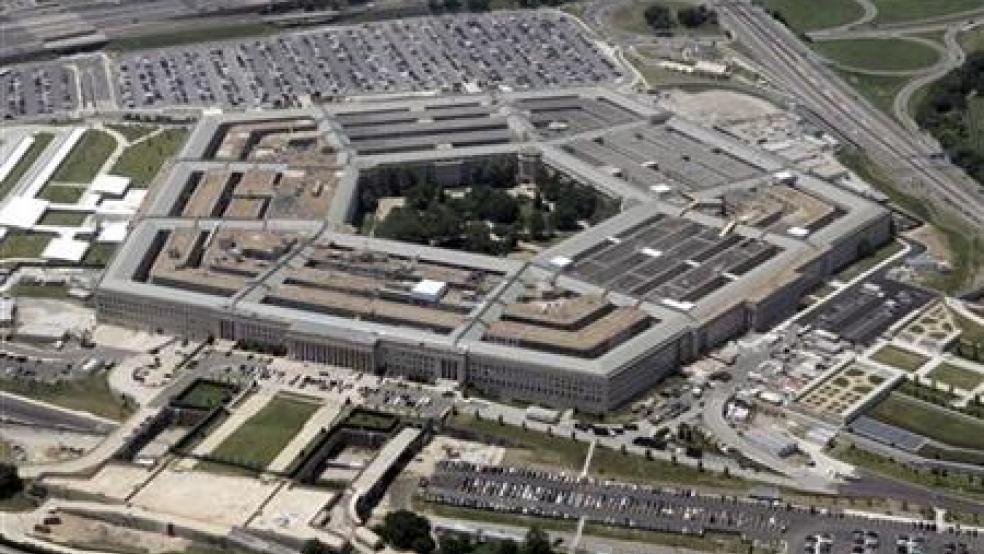With its fiscal 2017 budget, the Pentagon is looking to spend more taxpayer dollars to blunt adversaries like ISIS while investing more money into cutting-edge weapons in an attempt to keep pace with Russia and China, which have introduced new arms onto the world stage.
The Defense Department released a steady stream of details about how it plans to spends millions of dollars on programs and weapons in its roughly $583 billion budget request for fiscal 2017.
Defense Secretary Ash Carter previewed the request, which will be officially unveiled on Feb. 9, during an event hosted by the Economic Club of Washington.
Related: As National Debt Hits $19 Trillion, a Spending Showdown Looms in Congress
“This budget marks a major inflection point for the Department of Defense,” he said, adding that his sprawling agency is taking “the long view” on threats facing the U.S. in an attempt to put the country’s military on sound footing for years to come. In addition to next year’s request, the Pentagon will roll out the latest Future Years Defense Plan (FYDP), the agency’s five-year fiscal blueprint.
Here’s what we know thus far:
War funding
In addition to $524 billion in base spending, the Pentagon is asking for another $59 billion for its Overseas Contingency Operations (OCO) account, commonly known as the war fund. Carter has signaled that the amount, the bare minimum set by the two-year budget agreement hammered out by the White and Congress, could increase.
Capitol Hill defense hawks have already said they will seek potentially tens of billions more for the account, setting up a clash with fiscal conservatives and creating a new headache for House Speaker Paul Ryan (R-WI), who wants to present a unified GOP front in a presidential election year.
Russia
The Pentagon is quadrupling the amount of money it will spend on the U.S. military presence in Europe, setting aside $3.4 billion for the European Reassurance Initiative, which covers training and gear for the U.S. and its European allies, and is aimed directly at countering Russian aggression in the region, especially in Ukraine.
Related: How to Blast Billions from the DOD Budget
The boost “is the most important new item” in the budget, according to Loren Thompson, chief operating officer of the Lexington Institute.
The surge means 3,000 to 5,000 U.S. troops will continually rotate throughout NATO countries, so as not to violate the coalition’s charter that prohibits a permanent military presence, he said.
F-35 Joint Strike Fighter
The fiscal 2017 roadmap is a mixed bag for the F-35. The U.S. Air Force plans to cut down the number of fighters it plans to order from 48 to 43, according to Defense News.
Related: Why the Pentagon Is Gunning for the Navy’s $23 Billion Combat Ship
While still a substantial buy, the reduction puts off the day when the annual production line for the service’s version of the fifth-generation plane becomes cost effective and doesn’t cost more to run than the lines for the Cold War-era jets it was meant to replace, said Thompson.
That’s bad news for a program that has already cost taxpayers about $400 billion to develop, making it the most expensive weapons effort in U.S. history.
Meanwhile, the Navy and the Marine Corps will get 13 more of the JSF variants, with a split of 10 and 3, respectively.
In terms of net impact to the program “it’s fairly modest,” Thompson said.
Littoral Combat Ship
Observers wondered what would happen to the Navy’s $37 billion Littoral Combat Ship effort after Carter fired off a blunt memo to the secretary of the Navy in December basically demanding the service cut its purchase from 52 to 40 ships and cease production of one of the ship’s two designs.
Bloomberg reported that push has failed because the service found $300 to $400 million in savings elsewhere. The fiscal 2017 budget submission will include funding for two vessels, one each from manufacturers Lockheed Martin and Austal USA.
Related: With $8.5 Trillion Unaccounted for, Why Should Congress Increase the Defense Budget?
ISIS
Perhaps bowing to bipartisan congressional pressure from Capitol Hill, the Obama administration will seek a major boost in funding for the fight against ISIS with a $7.5 billion request. That doubles the amount from fiscal 2016.
The proposed budget is a bit of the 800 billion roll of the dice for Carter. President Obama leaves office next year and the conventional wisdom is that he won’t be kept on by a new administration, Democrat or Republican.
“Any guidance Secretary Carter issues that isn’t well received can simply be waited out by the military, Thompson said.
And the FYDP “is the least consequential [one] of the Obama years because we are at the end,” he added, noting that in 16 months there will be a new president and a new Pentagon chief. “Who knows how priorities might change?’
Thompson said the biggest “question mark” about the five-year plan is what it says about the Air Force’s modernization efforts, which experts recently warned could be so expensive that crippling cuts will need to be made elsewhere in the defense budget.





